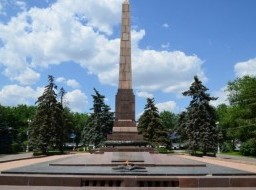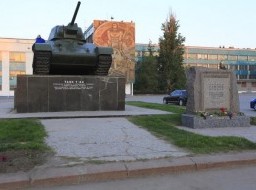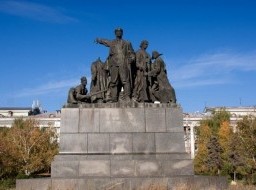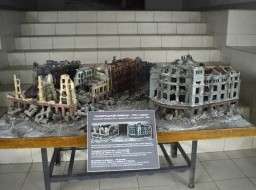Line of defense of 62nd Army
The Battle of Stalingrad (23 August 1942 – 2 February 1943) was the largest confrontation of World War II, in which Germany and its allies fought the Soviet Union for control of the city of Stalingrad (now Volgograd) in Southern Russia. Marked by fierce close quarters combat and direct assaults on civilians in air raids, it was the largest (nearly 2.2 million personnel) and bloodiest (1.8–2 million killed, wounded or captured) battle in the history of warfare. After their defeat at Stalingrad, the German High Command had to withdraw vast military forces from the Western Front to replace their losses. The German offensive to capture Stalingrad began in August 1942, using the 6th Army and elements of the 4th Panzer Army. The attack was supported by intensive Luftwaffe bombing that reduced much of the city to rubble. The fighting degenerated into house-to-house fighting; both sides poured reinforcements into the city. By mid-November 1942, the Germans had pushed the Soviet defenders back at great cost into narrow zones along the west bank of the Volga River. On 19 November 1942, the Red Army launched Operation Uranus, a two-pronged attack targeting the weaker Romanian and Hungarian armies protecting the German 6th Army's flanks. The Axis forces on the flanks were overrun and the 6th Army was cut off and surrounded in the Stalingrad area. Adolf Hitler ordered that the army stay in Stalingrad and make no attempt to break out; instead, attempts were made to supply the army by air and to break the encirclement from the outside. Heavy fighting continued for another two months. By the beginning of February 1943, the Axis forces in Stalingrad had exhausted their ammunition and food. The remaining units of the 6th Army surrendered. The battle lasted five months, one week and three days. By the spring of 1942, despite the failure of Operation Barbarossa to decisively defeat the Soviet Union in a single campaign, the Wehrmacht had captured vast expanses of territory, including Ukraine, Belarus, and the Baltic republics. Elsewhere, the war had been progressing well: the U-boat offensive in the Atlantic had been very successful and Erwin Rommel had just captured Tobruk. In the east, they had stabilized their front in a line running from Leningrad in the north to Rostov in the south. There were a number of salients, but these were not particularly threatening. Hitler was confident that he could master the Red Army after the winter of 1942, because even though Army Group Centre (Heeresgruppe Mitte) had suffered heavy losses west of Moscow the previous winter, 65% of its infantry had not been engaged and had been rested and re-equipped. Neither Army Group North nor Army Group South had been particularly hard pressed over the winter. Stalin was expecting the main thrust of the German summer attacks to be directed against Moscow again. With the initial operations being very successful, the Germans decided that their summer campaign in 1942 would be directed at the southern parts of the Soviet Union. The initial objectives in the region around Stalingrad were the destruction of the industrial capacity of the city and the deployment of forces to block the Volga River. The river was a key route from the Caucasus and the Caspian Sea to central Russia. Its capture would disrupt commercial river traffic. The Germans cut the pipeline from the oilfields when they captured Rostov on 23 July. The capture of Stalingrad would make the delivery of Lend Lease supplies via the Persian Corridor much more difficult. On 23 July 1942, Hitler personally rewrote the operational objectives for the 1942 campaign, greatly expanding them to include the occupation of the city of Stalingrad. Both sides began to attach propaganda value to the city, based on it bearing the name of the leader of the Soviet Union. Hitler proclaimed that after Stalingrad's capture, its male citizens were to be killed and all women and children were to be deported because its population was "thoroughly communistic" and "especially dangerous". It was assumed that the fall of the city would also firmly secure the northern and western flanks of the German armies as they advanced on Baku, with the aim of securing these strategic petroleum resources for Germany. The expansion of objectives was a significant factor in Germany's failure at Stalingrad, caused by German overconfidence and an underestimation of Soviet reserves. The Soviets realized that they were under tremendous constraints of time and resources and ordered that anyone strong enough to hold a rifle be sent to fight. |









